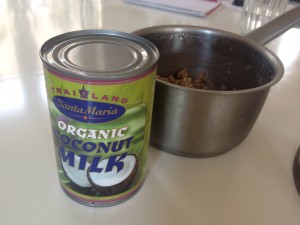 BPA, bisfenol A, har jag skrivit om tidigare https://4health.se/?s=bisfenol Det här hormonstörande ämnet som finns i en del plast, tex i plasthinnan på insidan av konservburkar, har visat sig ge en del mindre behagliga symtom och följder. Pga. dess hormonpåverkan kan det ge allt från östrogenpåverkande effekter, till övervikt.
BPA, bisfenol A, har jag skrivit om tidigare https://4health.se/?s=bisfenol Det här hormonstörande ämnet som finns i en del plast, tex i plasthinnan på insidan av konservburkar, har visat sig ge en del mindre behagliga symtom och följder. Pga. dess hormonpåverkan kan det ge allt från östrogenpåverkande effekter, till övervikt.
BPA anses bl.a. vara en “obesogene” (“Obesogens are foreign chemical compounds that disrupt normal development and balance of lipid metabolism, which in some cases, can lead to obesity”). BPA stör alltså fettcellsmetabolismen. Dessutom inducerar det ett proinflammatoriskt tillstånd.
Nu visar det sig att BPA dessutom påverkar insulinmekanismen. Den mekanism som ska hålla vårt blodsocker i schack.
BPA har kopplats samman med att förändra insulinutsöndringen (i icke-diabetiker) även när man bara utsatts för “säkra” nivåer av BPA.
Efter att man sett insulinresistens av BPA i djurstudier, valde forskarna att göra en studie på människor.
Så här säger forskarna:
“Human cross-sectional and animal studies have shown an association of the chemical bisphenol A (BPA) with insulin resistance, type 2 diabetes, and other metabolic diseases, but no human experimental study has investigated whether BPA alters insulin/C-peptide secretion.
Design: Men and postmenopausal women (without diabetes) were orally administered either the vehicle or a BPA dose of 50 µg/kg body weight, which has been predicted by US regulators (Food and Drug Administration, Environmental Protection Agency) to be the maximum, safe daily oral BPA dose over the lifetime. Insulin response was assessed in two cross-over experiments using an oral glucose tolerance test (OGTT; experiment 1) and a hyperglycemic (HG) clamp (experiment 2). Main outcomes were the percentage change of BPA session measures relative to those of the control session.
Results: Serum bioactive BPA after experimental exposure was at levels detected in human biomonitoring studies. In the OGTT, a strong positive correlation was found between hemoglobin A1c(HbA1c) and the percentage change in the insulinogenic index (Spearman = 0.92), an indicator of early-phase insulin response, and the equivalent C-peptide index (Pearson = 0.97). In the HG clamp study, focusing on the later-phase insulin response to a stable level of glucose, several measures of insulin and C-peptide appeared suppressed during the BPA session relative to the control session; the change in insulin maximum concentration (Cmax) was negatively correlated with HbA1c and the Cmax of bioactive serum BPA.
Conclusions: This exploratory study suggests that BPA exposure to a dose considered safe by US regulators may alter glucose-stimulated insulin response in humans.”
https://academic.oup.com/jes/article/2/10/1173/5094959

Då undrar jag över tetror för bl a kokosgrädde och kokosmjölk som jag valt istället för burkar. Hur osäkert är det valet?